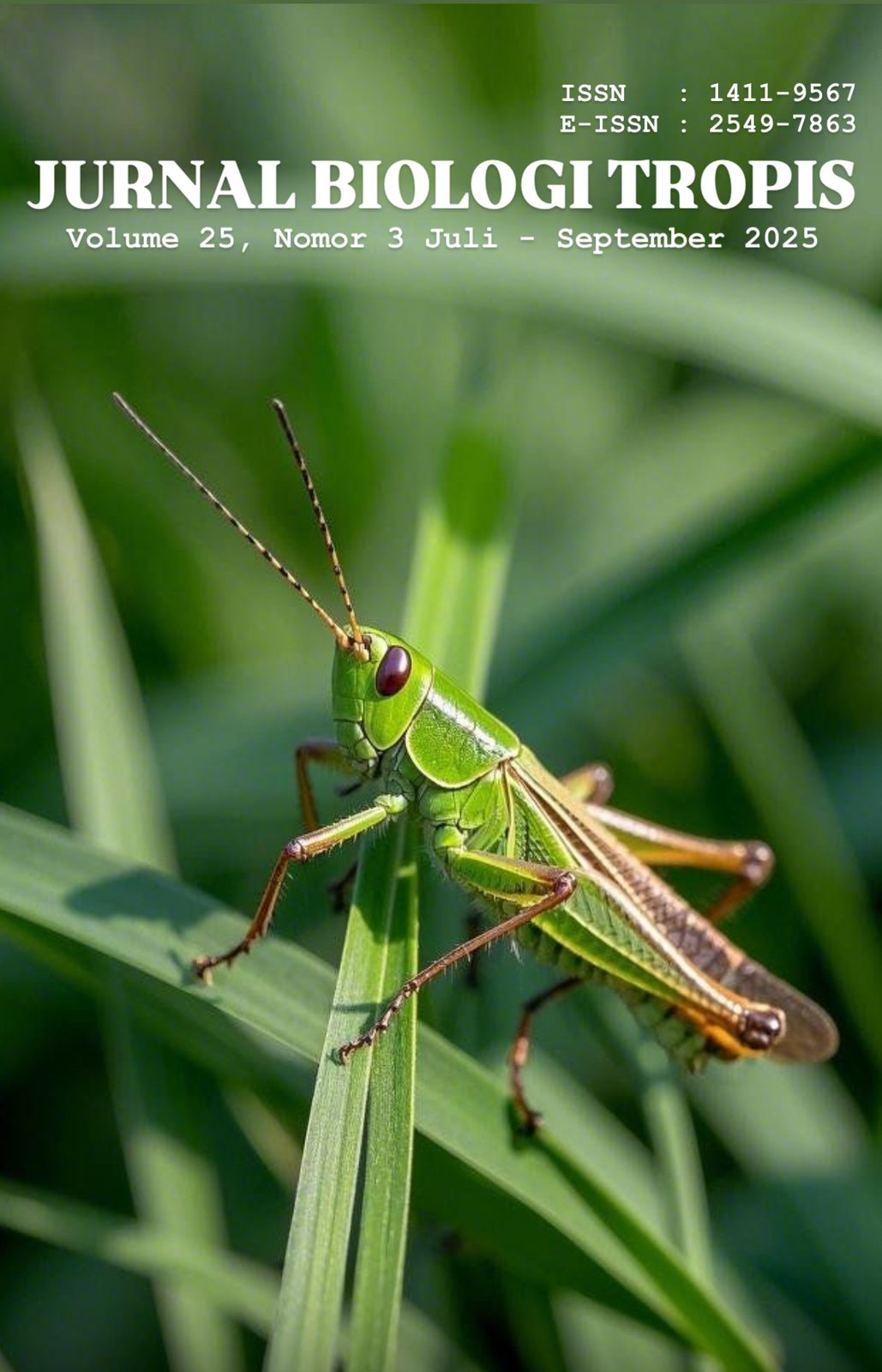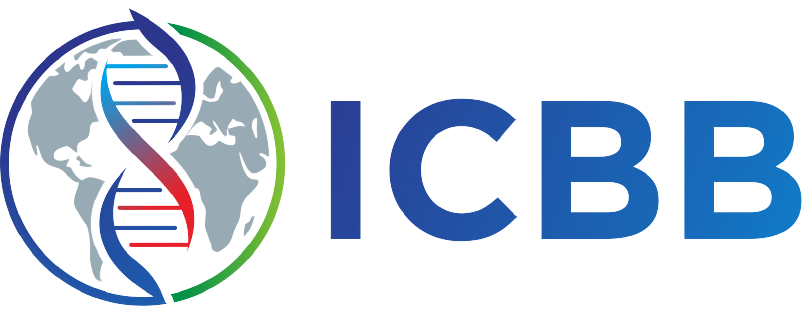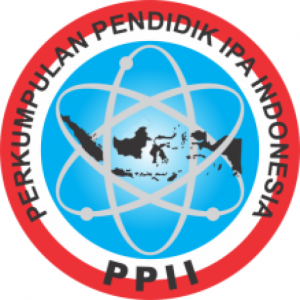The Role and Regulation of Natural Killer (NK) Cells in Chemotherapy: A Literature Review
Authors
Pauzan PauzanDOI:
10.29303/jbt.v25i3.9465Published:
2025-07-10Issue:
Vol. 25 No. 3 (2025): Juli-SeptemberKeywords:
Cancer immunotherapy, chemotherapy, natural killer cells, NK cell regulation, tumor microenvironment.Articles
Downloads
How to Cite
Downloads
Metrics
Abstract
Natural Killer (NK) cells, as innate immune effectors capable of targeting tumor cells without prior sensitization, interact complexly with chemotherapy, which can both enhance and suppress their functions. This literature review aims to comprehensively evaluate the role and regulation of NK cells in the context of chemotherapy over the past decade. Literature searches were conducted through Google Scholar, PubMed, Scopus, and Web of Science databases using relevant keywords. The review findings indicate that several chemotherapeutic agents can enhance NK cell activity by increasing the expression of activating ligands on tumor cells and promoting the release of pro-inflammatory cytokines. However, chemotherapy may also suppress NK cell function through systemic immunosuppression and alterations in the tumor microenvironment. NK cell-based immunotherapy, especially when combined with chemotherapy, demonstrates promising therapeutic potential. Recent studies support the development of strategies such as genetic modification, exogenous cytokine administration, and NK cell engineering to improve therapeutic efficacy. This review underscores the importance of further research to optimize the synergy between NK cells and chemotherapy in cancer treatment.
References
Acharya, A. (2017). NK cell as a Novel Tool to Regulate and Inhibit the Progressive Growth of Tumor after Chemotherapy. Cancer Therapy & Oncology International Journal, 8(1). https://doi.org/10.19080/ctoij.2017.08.555728
Adib, Y., Boy, M., Serror, K., Dulphy, N., Revenu, C., Duciel, L., Boccara, D., Mimoun, M., Samardzic, M., Bagot, M., Bensussan, A., & Michel, L. (2023). Modulation of NK cell activation by exogenous calcium from alginate dressings in vitro. Frontiers in Immunology, 14. https://doi.org/10.3389/fimmu.2023.1141047
Archilla‐Ortega, A., Domuro, C., Martín-Liberal, J., & Muñoz, P. (2022). Blockade of novel immune checkpoints and new therapeutic combinations to boost antitumor immunity [Review of Blockade of novel immune checkpoints and new therapeutic combinations to boost antitumor immunity]. Journal of Experimental & Clinical Cancer Research, 41(1). BioMed Central. https://doi.org/10.1186/s13046-022-02264-x
Bai, R., Chen, N., Li, L., Du, N., Bai, L., Lv, Z., Tian, H., & Cui, J. (2020). Mechanisms of Cancer Resistance to Immunotherapy [Review of Mechanisms of Cancer Resistance to Immunotherapy]. Frontiers in Oncology, 10. Frontiers Media. https://doi.org/10.3389/fonc.2020.01290
Bald, T., Krummel, M. F., Smyth, M. J., & Barry, K. C. (2020). The NK cell–cancer cycle: advances and new challenges in NK cell–based immunotherapies [Review of The NK cell–cancer cycle: advances and new challenges in NK cell–based immunotherapies]. Nature Immunology, 21(8), 835. Nature Portfolio. https://doi.org/10.1038/s41590-020-0728-z
Basse, P., Whiteside, T. L., Chambers, W. H., & Herberman, R. B. (2001). Therapeutic Activity of NK Cells against Tumors [Review of Therapeutic Activity of NK Cells against Tumors]. International Reviews of Immunology, 20, 439. Taylor & Francis. https://doi.org/10.3109/08830180109054416
Becknell, B., & Caligiuri, M. A. (2008). Natural Killer Cells in Innate Immunity and Cancer [Review of Natural Killer Cells in Innate Immunity and Cancer]. Journal of Immunotherapy, 31(8), 685. Lippincott Williams & Wilkins. https://doi.org/10.1097/cji.0b013e318182de23
Blunt, M. D., & Khakoo, S. I. (2023). Harnessing natural killer cell effector function against cancer [Review of Harnessing natural killer cell effector function against cancer]. Immunotherapy Advances, 4(1). Oxford University Press. https://doi.org/10.1093/immadv/ltad031
Boettcher, J. (2019). CRYSTAL STRUCTURE OF CDK8-CycC IN COMPLEX WITH COMPOUND 1. https://doi.org/10.2210/pdb6r3s/pdb
Boysen, A. K., Jensen, P., Johansen, P., Dybkær, K., & Nyegaard, M. (2011). Treatment of Aggressive NK-Cell Leukemia: A Case Report and Review of the Literature. Case Reports in Hematology, 2011, 1. https://doi.org/10.1155/2011/818469
Cao, Y., Wang, X., Jin, T., Tian, Y., Dai, C., Widarma, C., Song, R., & Xu, F. (2020). Immune checkpoint molecules in natural killer cells as potential targets for cancer immunotherapy [Review of Immune checkpoint molecules in natural killer cells as potential targets for cancer immunotherapy]. Signal Transduction and Targeted Therapy, 5(1). Springer Nature. https://doi.org/10.1038/s41392-020-00348-8
Carotta, S. (2016). Targeting NK Cells for Anticancer Immunotherapy: Clinical and Preclinical Approaches [Review of Targeting NK Cells for Anticancer Immunotherapy: Clinical and Preclinical Approaches]. Frontiers in Immunology, 7. Frontiers Media. https://doi.org/10.3389/fimmu.2016.00152
Chaurasiya, S., Woo, Y., Choong, K., Deshpande, S., & Fong, Y. (2023). Combining oncolytic viruses with immune cell therapy as treatments for cancer: OV, CAR T-cell, and NK combinations. In Elsevier eBooks (p. 321). Elsevier BV. https://doi.org/10.1016/b978-0-12-822620-9.00006-9
Chen, X., Jiang, L., & Liu, X. (2022). Natural killer cells: the next wave in cancer immunotherapy [Review of Natural killer cells: the next wave in cancer immunotherapy]. Frontiers in Immunology, 13. Frontiers Media. https://doi.org/10.3389/fimmu.2022.954804
Chester, C., Fritsch, K., & Kohrt, H. E. (2015). Natural Killer Cell Immunomodulation: Targeting Activating, Inhibitory, and Co-stimulatory Receptor Signaling for Cancer Immunotherapy [Review of Natural Killer Cell Immunomodulation: Targeting Activating, Inhibitory, and Co-stimulatory Receptor Signaling for Cancer Immunotherapy]. Frontiers in Immunology, 6. Frontiers Media. https://doi.org/10.3389/fimmu.2015.00601
Danier, A. C. A., Melo, R. P. de, Napimoga, M. H., & Laguna-Abreu, M. T. C. (2011). The role of natural killer cells in chronic myeloid leukemia. Revista Brasileira de Hematologia e Hemoterapia, 33(3), 216. https://doi.org/10.5581/1516-8484.20110057
DAVIS, C., & Rizzieri, D. A. (2015). Immunotherapeutic Applications of NK Cells [Review of Immunotherapeutic Applications of NK Cells]. Pharmaceuticals, 8(2), 250. Multidisciplinary Digital Publishing Institute. https://doi.org/10.3390/ph8020250
Fehniger, T. A. (2015). Natural killer cells: Basic biology and immunotherapy potential. AACR Education Book, 2015(1), 85. https://doi.org/10.1158/aacr.edb-15-8030
Galeaz, C., Totis, C., & Bisio, A. (2021). Radiation Resistance: A Matter of Transcription Factors [Review of Radiation Resistance: A Matter of Transcription Factors]. Frontiers in Oncology, 11. Frontiers Media. https://doi.org/10.3389/fonc.2021.662840
García-Aranda, M., Téllez, T., McKenna, L., & Redondo, M. (2022). Neurokinin-1 Receptor (NK-1R) Antagonists as a New Strategy to Overcome Cancer Resistance [Review of Neurokinin-1 Receptor (NK-1R) Antagonists as a New Strategy to Overcome Cancer Resistance]. Cancers, 14(9), 2255. Multidisciplinary Digital Publishing Institute. https://doi.org/10.3390/cancers14092255
Goel, S., DeCristo, M. J., McAllister, S. S., & Zhao, J. J. (2018). CDK4/6 Inhibition in Cancer: Beyond Cell Cycle Arrest [Review of CDK4/6 Inhibition in Cancer: Beyond Cell Cycle Arrest]. Trends in Cell Biology, 28(11), 911. Elsevier BV. https://doi.org/10.1016/j.tcb.2018.07.002
Guilbaud, E., & Galluzzi, L. (2022, September 26). Adaptation to MOMP drives cancer persistence. In Cell Research (Vol. 33, Issue 2, p. 93). Springer Nature. https://doi.org/10.1038/s41422-022-00729-4
Han, D., Xu, Y., Zhao, X., Mao, Y., Kang, Q., Wen, W., Yu, X., Xu, L., Liu, F., Zhang, M., Cui, J., Wang, Z., Zhixin, Y., Du, P., & Qin, W. (2020). A novel human anti-TIGIT monoclonal antibody with excellent function in eliciting NK cell-mediated antitumor immunity. Biochemical and Biophysical Research Communications, 534, 134. https://doi.org/10.1016/j.bbrc.2020.12.013
He, H., Wang, X., Zheng, X., Sun, H., Shi, X., Zhong, Y., Huang, B., Yang, L., Li, J., Liao, L., Zhang, L., Hu, L., & Lin, Y. (2010). Concurrent blockade of the NF-κB and Akt pathways potently sensitizes cancer cells to chemotherapeutic-induced cytotoxicity. Cancer Letters, 295(1), 38. https://doi.org/10.1016/j.canlet.2010.02.011
He, L., Chen, N., Dai, L., & Peng, X. (2023). Advances and challenges of immunotherapies in NK/T cell lymphomas [Review of Advances and challenges of immunotherapies in NK/T cell lymphomas]. iScience, 26(11), 108192. Cell Press. https://doi.org/10.1016/j.isci.2023.108192
Herberman, R. B. (2002). Cancer immunotherapy with natural killer cells [Review of Cancer immunotherapy with natural killer cells]. Seminars in Oncology, 29(3), 27. Elsevier BV. https://doi.org/10.1053/sonc.2002.33079
Housman, G., Byler, S., Heerboth, S., Lapińska, K., Longacre, M., Snyder, N., & Sarkar, S. (2014). Drug Resistance in Cancer: An Overview [Review of Drug Resistance in Cancer: An Overview]. Cancers, 6(3), 1769. Multidisciplinary Digital Publishing Institute. https://doi.org/10.3390/cancers6031769
Jeong, S., Choi, Y.-Y., & Kim, K. (2021). Engineering Therapeutic Strategies in Cancer Immunotherapy via Exogenous Delivery of Toll-like Receptor Agonists [Review of Engineering Therapeutic Strategies in Cancer Immunotherapy via Exogenous Delivery of Toll-like Receptor Agonists]. Pharmaceutics, 13(9), 1374. Multidisciplinary Digital Publishing Institute. https://doi.org/10.3390/pharmaceutics13091374
Jiang, P., Jing, S., Sheng, G., & Jia, F. (2024). The basic biology of NK cells and its application in tumor immunotherapy [Review of The basic biology of NK cells and its application in tumor immunotherapy]. Frontiers in Immunology, 15. Frontiers Media. https://doi.org/10.3389/fimmu.2024.1420205
Jiang, X., Lin, J., Shangguan, C., Wang, X., Xiang, B., Chen, J., Guo, H., Zhang, W., Zhang, J., Shi, Y., Zhu, J., & Yang, H. (2023). Intrinsic RIG-I restrains STAT5 activation to modulate anti-tumor activity of CD8+ T cells. Journal of Clinical Investigation, 133(9). https://doi.org/10.1172/jci160790
Joyce, M., & Sun, P. D. (2011). The Structural Basis of Ligand Recognition by Natural Killer Cell Receptors [Review of The Structural Basis of Ligand Recognition by Natural Killer Cell Receptors]. BioMed Research International, 2011(1). Hindawi Publishing Corporation. https://doi.org/10.1155/2011/203628
Karlsson‐Parra, A. (2010). Natural killer cells in the spleen and lymph node. In Elsevier eBooks (p. 359). Elsevier BV. https://doi.org/10.1016/b978-0-12-370454-2.00027-2
Khan, S. U., Fatima, K., Aisha, S., & Malik, F. (2024). Unveiling the mechanisms and challenges of cancer drug resistance. Cell Communication and Signaling, 22(1). https://doi.org/10.1186/s12964-023-01302-1
Klein, K. R., Wang, T. C., Lander, E. S., Altfeld, M., & García-Beltrán, W. F. (2019). Applying CRISPR-based genetic screens to identify drivers of tumor-cell sensitivity towards NK-cell attack. bioRxiv (Cold Spring Harbor Laboratory). https://doi.org/10.1101/531962
Köhler, J., Catalano, M., & Ambrogio, C. (2017). Back to the Bench? MEK and ERK Inhibitors for the Treatment of KRAS Mutant Lung Adenocarcinoma [Review of Back to the Bench? MEK and ERK Inhibitors for the Treatment of KRAS Mutant Lung Adenocarcinoma]. Current Medicinal Chemistry, 25(5), 558. Bentham Science Publishers. https://doi.org/10.2174/0929867324666170530093100
Koustas, E., Sarantis, P., Papavassiliou, A. G., & Karamouzis, M. V. (2020). The Resistance Mechanisms of Checkpoint Inhibitors in Solid Tumors [Review of The Resistance Mechanisms of Checkpoint Inhibitors in Solid Tumors]. Biomolecules, 10(5), 666. Multidisciplinary Digital Publishing Institute. https://doi.org/10.3390/biom10050666
Kyrysyuk, O., & Wucherpfennig, K. W. (2022). Designing Cancer Immunotherapies That Engage T Cells and NK Cells [Review of Designing Cancer Immunotherapies That Engage T Cells and NK Cells]. Annual Review of Immunology, 41(1), 17. Annual Reviews. https://doi.org/10.1146/annurev-immunol-101921-044122
Lee, S. K., & Gasser, S. (2010). The role of natural killer cells in cancer therapy [Review of The role of natural killer cells in cancer therapy]. Frontiers in Bioscience-Elite, 2, 380. Frontiers Media. https://doi.org/10.2741/e98
Levy, E. M., Roberti, M. P., & Mordoh, J. (2011). Natural Killer Cells in Human Cancer: From Biological Functions to Clinical Applications [Review of Natural Killer Cells in Human Cancer: From Biological Functions to Clinical Applications]. BioMed Research International, 2011(1). Hindawi Publishing Corporation. https://doi.org/10.1155/2011/676198
Lu, Y. (2022). Natural Killer (NK) cells in immunotherapy and perspectives in antitumour approaches. BIO Web of Conferences, 55, 1005. https://doi.org/10.1051/bioconf/20225501005
Maia, A., Tarannum, M., Lérias, J. R., Piccinelli, S., Borrego, L. M., Maeurer, M., Romee, R., & Castillo-Martín, M. (2024). Building a Better Defense: Expanding and Improving Natural Killer Cells for Adoptive Cell Therapy [Review of Building a Better Defense: Expanding and Improving Natural Killer Cells for Adoptive Cell Therapy]. Cells, 13(5), 451. Multidisciplinary Digital Publishing Institute. https://doi.org/10.3390/cells13050451
Maskalenko, N. A., Zhigarev, D., & Campbell, K. S. (2022). Harnessing natural killer cells for cancer immunotherapy: dispatching the first responders [Review of Harnessing natural killer cells for cancer immunotherapy: dispatching the first responders]. Nature Reviews Drug Discovery, 21(8), 559. Nature Portfolio. https://doi.org/10.1038/s41573-022-00413-7
Miller, J. S. (2002). Biology of Natural Killer Cells in Cancer and Infection [Review of Biology of Natural Killer Cells in Cancer and Infection]. Cancer Investigation, 20(3), 405. Taylor & Francis. https://doi.org/10.1081/cnv-120001185
Mills, C. C., Kolb, E. A., & Sampson, V. B. (2018). Development of Chemotherapy with Cell-Cycle Inhibitors for Adult and Pediatric Cancer Therapy [Review of Development of Chemotherapy with Cell-Cycle Inhibitors for Adult and Pediatric Cancer Therapy]. Cancer Research, 78(2), 320. American Association for Cancer Research. https://doi.org/10.1158/0008-5472.can-17-2782
Munasir, Z. (2016). Respons Imun Terhadap Infeksi Bakteri. Sari Pediatri, 2(4), 193. https://doi.org/10.14238/sp2.4.2001.193-7
Myers, J. A., & Miller, J. S. (2020). Exploring the NK cell platform for cancer immunotherapy [Review of Exploring the NK cell platform for cancer immunotherapy]. Nature Reviews Clinical Oncology, 18(2), 85. Nature Portfolio. https://doi.org/10.1038/s41571-020-0426-7
Navarro, A. G., Björklund, A. T., & Chekenya, M. (2015). Therapeutic Potential and Challenges of Natural Killer Cells in Treatment of Solid Tumors [Review of Therapeutic Potential and Challenges of Natural Killer Cells in Treatment of Solid Tumors]. Frontiers in Immunology, 6. Frontiers Media. https://doi.org/10.3389/fimmu.2015.00202
Pahl, J., Cerwenka, A., & Ni, J. (2018). Memory-Like NK Cells: Remembering a Previous Activation by Cytokines and NK Cell Receptors [Review of Memory-Like NK Cells: Remembering a Previous Activation by Cytokines and NK Cell Receptors]. Frontiers in Immunology, 9. Frontiers Media. https://doi.org/10.3389/fimmu.2018.02796
Pamuji, F. Y., & Ramadhan, V. P. (2021). Komparasi Algoritma Random Forest dan Decision Tree untuk Memprediksi Keberhasilan Immunotheraphy. Jurnal Teknologi Dan Manajemen Informatika, 7(1), 46. https://doi.org/10.26905/jtmi.v7i1.5982
Panieri, E., & Saso, L. (2019). Potential Applications of NRF2 Inhibitors in Cancer Therapy [Review of Potential Applications of NRF2 Inhibitors in Cancer Therapy]. Oxidative Medicine and Cellular Longevity, 2019, 1. Hindawi Publishing Corporation. https://doi.org/10.1155/2019/8592348
Paul, S., & Lal, G. (2017). The Molecular Mechanism of Natural Killer Cells Function and Its Importance in Cancer Immunotherapy [Review of The Molecular Mechanism of Natural Killer Cells Function and Its Importance in Cancer Immunotherapy]. Frontiers in Immunology, 8. Frontiers Media. https://doi.org/10.3389/fimmu.2017.01124
Peng, S., Long, M. D., Chen, Q.-S., Yin, Z., Zeng, C., Zhang, W., Wen, Q., Peng, S., Ke, W., & Wu, Y. (2025). Perspectives on cancer therapy—synthetic lethal precision medicine strategies, molecular mechanisms, therapeutic targets and current technical challenges [Review of Perspectives on cancer therapy—synthetic lethal precision medicine strategies, molecular mechanisms, therapeutic targets and current technical challenges]. Cell Death Discovery, 11(1). Springer Nature. https://doi.org/10.1038/s41420-025-02418-8
Peterson, E. E., & Barry, K. C. (2021). The Natural Killer–Dendritic Cell Immune Axis in Anti-Cancer Immunity and Immunotherapy [Review of The Natural Killer–Dendritic Cell Immune Axis in Anti-Cancer Immunity and Immunotherapy]. Frontiers in Immunology, 11. Frontiers Media. https://doi.org/10.3389/fimmu.2020.621254
Qu, B., Yuan, J., Liu, X., Zhang, S., Ma, X., & Lu, L. (2024). Anticancer activities of natural antimicrobial peptides from animals [Review of Anticancer activities of natural antimicrobial peptides from animals]. Frontiers in Microbiology, 14. Frontiers Media. https://doi.org/10.3389/fmicb.2023.1321386
Rascio, F., Spadaccino, F., Rocchetti, M. T., Castellano, G., Stallone, G., Netti, G. S., & Ranieri, E. (2021). The Pathogenic Role of PI3K/AKT Pathway in Cancer Onset and Drug Resistance: An Updated Review [Review of The Pathogenic Role of PI3K/AKT Pathway in Cancer Onset and Drug Resistance: An Updated Review]. Cancers, 13(16), 3949. Multidisciplinary Digital Publishing Institute. https://doi.org/10.3390/cancers13163949
Renner, K., Singer, K., Koehl, G. E., Geissler, E. K., Peter, K., Siska, P. J., & Kreutz, M. (2017). Metabolic Hallmarks of Tumor and Immune Cells in the Tumor Microenvironment [Review of Metabolic Hallmarks of Tumor and Immune Cells in the Tumor Microenvironment]. Frontiers in Immunology, 8. Frontiers Media. https://doi.org/10.3389/fimmu.2017.00248
Rosenberg, J., & Huang, J. (2017). CD8+ T cells and NK cells: parallel and complementary soldiers of immunotherapy. Current Opinion in Chemical Engineering, 19, 9. https://doi.org/10.1016/j.coche.2017.11.006
Rossi, F., Fredericks, N., Snowden, A., Allegrezza, M. J., & Moreno‐Nieves, U. Y. (2022). Next Generation Natural Killer Cells for Cancer Immunotherapy [Review of Next Generation Natural Killer Cells for Cancer Immunotherapy]. Frontiers in Immunology, 13. Frontiers Media. https://doi.org/10.3389/fimmu.2022.886429
Sabry, M., & Lowdell, M. W. (2013). Tumor-Primed NK Cells: Waiting for the Green Light [Review of Tumor-Primed NK Cells: Waiting for the Green Light]. Frontiers in Immunology, 4. Frontiers Media. https://doi.org/10.3389/fimmu.2013.00408
Shan, J., Han, D., Shen, C., Lei, Q., & Zhang, Y. (2022). Mechanism and strategies of immunotherapy resistance in colorectal cancer [Review of Mechanism and strategies of immunotherapy resistance in colorectal cancer]. Frontiers in Immunology, 13. Frontiers Media. https://doi.org/10.3389/fimmu.2022.1016646
Sharma, P., Hu‐Lieskovan, S., Wargo, J. A., & Ribas, A. (2017). Primary, Adaptive, and Acquired Resistance to Cancer Immunotherapy [Review of Primary, Adaptive, and Acquired Resistance to Cancer Immunotherapy]. Cell, 168(4), 707. Cell Press. https://doi.org/10.1016/j.cell.2017.01.017
Shaver, K. A., Croom-Perez, T. J., & Copik, A. J. (2021). Natural Killer Cells: The Linchpin for Successful Cancer Immunotherapy [Review of Natural Killer Cells: The Linchpin for Successful Cancer Immunotherapy]. Frontiers in Immunology, 12. Frontiers Media. https://doi.org/10.3389/fimmu.2021.679117
Shin, E., Bak, S. H., Park, T., Kim, J.-W., Yoon, S.-R., Jung, H., & Noh, J. (2023). Understanding NK cell biology for harnessing NK cell therapies: targeting cancer and beyond [Review of Understanding NK cell biology for harnessing NK cell therapies: targeting cancer and beyond]. Frontiers in Immunology, 14. Frontiers Media. https://doi.org/10.3389/fimmu.2023.1192907
Strong, R. K. (2002). Asymmetric ligand recognition by the activating natural killer cell receptor NKG2D, a symmetric homodimer [Review of Asymmetric ligand recognition by the activating natural killer cell receptor NKG2D, a symmetric homodimer]. Molecular Immunology, 38(14), 1029. Elsevier BV. https://doi.org/10.1016/s0161-5890(02)00032-9
Syn, N., Teng, M. W. L., Mok, T., & Soo, R. A. (2017). De-novo and acquired resistance to immune checkpoint targeting [Review of De-novo and acquired resistance to immune checkpoint targeting]. The Lancet Oncology, 18(12). Elsevier BV. https://doi.org/10.1016/s1470-2045(17)30607-1
Tanaka, N., & Ebi, H. (2024). Mechanisms of Resistance to KRAS Inhibitors: Cancer Cells’ Strategic Use of Normal Cellular Mechanisms to Adapt [Review of Mechanisms of Resistance to KRAS Inhibitors: Cancer Cells’ Strategic Use of Normal Cellular Mechanisms to Adapt]. Cancer Science. Wiley. https://doi.org/10.1111/cas.16441
Toffoli, E. C., Sheikhi, A., Höppner, Y. D., Kok, P. de, Yazdanpanah‐Samani, M., Spanholtz, J., Verheul, H. M. W., Vliet, H. van, & Gruijl, T. D. de. (2021). Natural Killer Cells and Anti-Cancer Therapies: Reciprocal Effects on Immune Function and Therapeutic Response [Review of Natural Killer Cells and Anti-Cancer Therapies: Reciprocal Effects on Immune Function and Therapeutic Response]. Cancers, 13(4), 711. Multidisciplinary Digital Publishing Institute. https://doi.org/10.3390/cancers13040711
Velde, R. V., Yoon, N., Marusyk, V., Durmaz, A., Dhawan, A., Miroshnychenko, D., Lozano‐Peral, D., Desai, B., Balynska, O. V., Poleszhuk, J., Liu, K., Teng, M., Abazeed, M. E., Mian, O. Y., Tan, A. C., Haura, E. B., Scott, J. G., & Marusyk, A. (2020). Resistance to targeted therapies as a multifactorial, gradual adaptation to inhibitor specific selective pressures. Nature Communications, 11(1). https://doi.org/10.1038/s41467-020-16212-w
Wang, E. A., Chen, W.-Y., & Wong, C. (2020). Multiple Growth Factor Targeting by Engineered Insulin-like Growth Factor Binding Protein-3 Augments EGF Receptor Tyrosine Kinase Inhibitor Efficacy. Scientific Reports, 10(1). https://doi.org/10.1038/s41598-020-59466-6
Wang, Q., & Wu, X. (2017). Primary and acquired resistance to PD-1/PD-L1 blockade in cancer treatment [Review of Primary and acquired resistance to PD-1/PD-L1 blockade in cancer treatment]. International Immunopharmacology, 46, 210. Elsevier BV. https://doi.org/10.1016/j.intimp.2017.03.015
Wang, Y., Wang, H., Yao, H., Li, C., Fang, J., & Xu, J. (2018). Regulation of PD-L1: Emerging Routes for Targeting Tumor Immune Evasion [Review of Regulation of PD-L1: Emerging Routes for Targeting Tumor Immune Evasion]. Frontiers in Pharmacology, 9. Frontiers Media. https://doi.org/10.3389/fphar.2018.00536
Wardani, P. P., Suprihati, S., & Wuryanti, W. (2011). Uji Antikanker Isolat Bioaktif L-asparaginase dari Kunyit (Curcuma domestica Val) terhadap Sel Kanker Serviks. Jurnal Kimia Sains Dan Aplikasi, 14(3), 89. https://doi.org/10.14710/jksa.14.3.89-93
Whiteside, T. L., & Herberman, R. B. (1995). The role of natural killer cells in immune surveillance of cancer [Review of The role of natural killer cells in immune surveillance of cancer]. Current Opinion in Immunology, 7(5), 704. Elsevier BV. https://doi.org/10.1016/0952-7915(95)80080-8
Widiatmaja, D. T., Mufida, D. C., & Febianti, Z. (2021). Pengaruh Pemberian Imunisasi Intranasal Epitope Protein RrgB 255-270 Streptococcus pneumoniae Terhadap Kadar IL-4. SRIWIJAYA JOURNAL OF MEDICINE, 4(1), 67. https://doi.org/10.32539/sjm.v4i1.155
Wu, P., Gao, W., Su, M., Nice, E. C., Zhang, W., Lin, J., & Xie, N. (2021). Adaptive Mechanisms of Tumor Therapy Resistance Driven by Tumor Microenvironment [Review of Adaptive Mechanisms of Tumor Therapy Resistance Driven by Tumor Microenvironment]. Frontiers in Cell and Developmental Biology, 9. Frontiers Media. https://doi.org/10.3389/fcell.2021.641469
Wu, S., Fu, T., Jiang, Y., & Shao, Z.-M. (2020). Natural killer cells in cancer biology and therapy [Review of Natural killer cells in cancer biology and therapy]. Molecular Cancer, 19(1). BioMed Central. https://doi.org/10.1186/s12943-020-01238-x
Wu, T., Lin, B., & Chang, H. (2015). Radio Resistance Mechanisms of Cancers: An Overview and Future Perspectives. Biology and Medicine. https://doi.org/10.4172/0974-8369.1000s2-003
Xing, K., & Shen, L. (2017). Molecular targeted therapy of cancer: The progress and future prospect. Frontiers in Laboratory Medicine, 1(2), 69. https://doi.org/10.1016/j.flm.2017.06.001
Yang, C., Li, Y., Yang, Y., & Chen, Z. (2020). Overview of Strategies to Improve Therapy against Tumors Using Natural Killer Cell [Review of Overview of Strategies to Improve Therapy against Tumors Using Natural Killer Cell]. Journal of Immunology Research, 2020, 1. Hindawi Publishing Corporation. https://doi.org/10.1155/2020/8459496
Zahreddine, H., & Borden, K. L. B. (2013). Mechanisms and insights into drug resistance in cancer. Frontiers in Pharmacology, 4. https://doi.org/10.3389/fphar.2013.00028
Zamai, L., Ponti, C., Mirandola, P., Gobbi, G., Papa, S., Galeotti, L., Cocco, L., & Vitale, M. (2007). NK Cells and Cancer [Review of NK Cells and Cancer]. The Journal of Immunology, 178(7), 4011. American Association of Immunologists. https://doi.org/10.4049/jimmunol.178.7.4011
Zhao, X., Lin, M., & Huang, X. (2023). Current status and future perspective of natural killer cell therapy for cancer. Medical Review, 3(4), 305. https://doi.org/10.1515/mr-2023-0031
Zhong, Y., & Liu, J. (2024). Emerging roles of CAR-NK cell therapies in tumor immunotherapy: current status and future directions. Cell Death Discovery, 10(1). https://doi.org/10.1038/s41420-024-02077-1
Zingoni, A., Fionda, C., Borrelli, C., Cippitelli, M., Santoni, A., & Soriani, A. (2017). Natural Killer Cell Response to Chemotherapy-Stressed Cancer Cells: Role in Tumor Immunosurveillance [Review of Natural Killer Cell Response to Chemotherapy-Stressed Cancer Cells: Role in Tumor Immunosurveillance]. Frontiers in Immunology, 8. Frontiers Media. https://doi.org/10.3389/fimmu.2017.01194
License
Copyright (c) 2025 Pauzan Pauzan

This work is licensed under a Creative Commons Attribution 4.0 International License.

Jurnal Biologi Tropis is licensed under a Creative Commons Attribution 4.0 International License.
The copyright of the received article shall be assigned to the author as the owner of the paper. The intended copyright includes the right to publish the article in various forms (including reprints). The journal maintains the publishing rights to the published articles.
Authors are permitted to disseminate published articles by sharing the link/DOI of the article at the journal. Authors are allowed to use their articles for any legal purposes deemed necessary without written permission from the journal with an acknowledgment of initial publication to this journal.


























